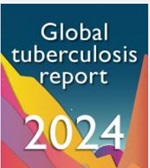Reports & Analysis | Infectious Diseases | Tuberculousis
Global Tuberculosis 2024 Report confirms TB is now the world's leading infectious disease killer
Time to read: 02:44
Time to listen: 03:37
Originally Published: 29 October 2029
Source: WHO
Type of article: Summary of Report or Analysis
MedED Catalogue Reference: MDRA005
Category: Reports & Analysis
Cross-reference: Infectious Diseases
Keywords: TB, LIMIC, Mortality
Summary of press release: World Health Organisation, 29 October 2024/Washington D.C., USA
The World Health Organization (WHO) has released a new report on tuberculosis, indicating that around 8.2 million people were newly diagnosed with TB in 2023—the highest figure since WHO began global TB monitoring in 1995. This marks a significant rise from the 7.5 million cases reported in 2022, reaffirming TB's status as the leading infectious disease killer in 2023, surpassing COVID-19.
This troubling increase reflects ongoing challenges in controlling TB globally, even though TB-related deaths showed a modest decline from 1.32 million to 1.25 million.
The report underscores that TB disproportionately affects people in 30 high-burden countries, with nations like India, Indonesia, and China accounting for more than half of global TB cases.
WHO’s findings indicate that while progress has been made in TB prevention and diagnostic coverage—especially among individuals living with HIV and close contacts of TB patients—the situation remains serious due to the persistent burden of multidrug-resistant TB (MDR/RR-TB), with only 44% of the estimated 400,000 cases receiving adequate treatment in 2023.
Funding gaps remain a substantial obstacle, with only 26% of the annual funding target met in 2023, highlighting the urgent need for financial investment to bolster TB prevention and care.
Low- and middle-income countries (LMICs) continue to carry 98% of the TB burden, making sustainable funding for TB services in these regions essential. With costs for TB diagnosis and treatment often exceeding 20% of household income, financial strain affects half of TB-affected households in LMICs. Socioeconomic and health factors such as undernutrition, HIV, alcohol use, smoking, and diabetes are key drivers of TB, exacerbated by external pressures like poverty, climate change, and urban migration.
The report calls for coordinated, multisectoral action to tackle these broad issues and substantial investments in TB research, including vaccine development, to achieve global targets by 2027. Dr. Tereza Kasaeva, Director of WHO’s Global TB Programme, warns that meeting these goals will require unified action across all sectors to address the complex drivers of TB and avoid significant setbacks in the fight against this disease.
Back top
Disclaimer
This article is in no way presented as an original work. Every effort has been made to attribute quotes and content correctly. Where possible, all information has been independently verified. The Medical Education Network bears no responsibility for any inaccuracies which may occur from the use of third-party sources. If you have any queries regarding this article contact us
Fact-checking Policy
The Medical Education Network makes every effort to review and fact-check the articles used as source material in our summaries and original material. We have strict guidelines in relation to the publications we use as our source data, favouring peer-reviewed research wherever possible. Every effort is made to ensure that the information contained here accurately reflects the original material. Should you find inaccuracies, out-of-date content or have any additional issues with our articles, please make use of the contact us form to notify us.



